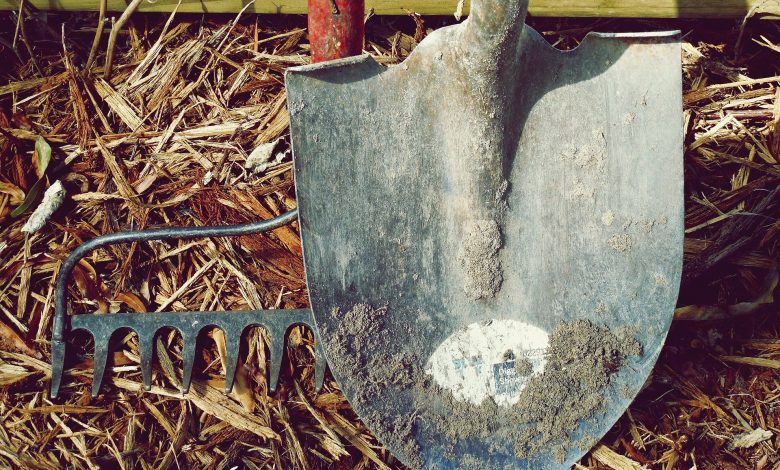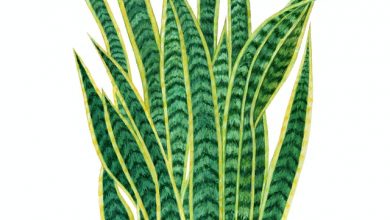What are the Best Gardening Tools?

The more your garden grows, the more you feel attuned to it. Your garden becomes a source of pride, and you always want to make sure that it’s looking its best. Whether your garden is just getting started or has been blooming for years, everyone needs the right collection of tools to maintain their creation.
Having a quality set of garden tools also increases the fun-factor when you’re taking care of your plants. But when you’re just getting started gardening, you may not know what tools you’ll need until you actually need them. To prepare yourself for taking on any situation in your garden, you’ll want to acquaint yourself with these essential tools. Below are the must-have gardening tools to have in your arsenal this growing season.
Pruning Shears
Having a good pair of pruning shears is critical to maintaining your garden. Pruners are essentially a heavy-duty pair of scissors that are helpful at shaping your garden and arranging flowers. With a quality set of pruners, you can trim back unruly branches with surprising ease and keep your bushes neat and tidy.
There are two styles of pruning shears you’ll see in the market: bypass and anvil. What’s the difference between bypass and anvil pruners? Anvil pruners feature a single straight blade that is pushed down into the plant material like a knife on a cutting board. Bypass pruners feature two curved edges and act as a traditional pair of scissors would.
Bypass pruners create a cleaner cut and are best used on flowers where you want to preserve a bud. Anvil pruners are better equipped for taking down thicker branches.

Loppers
Loppers are similar to pruning shears, only longer and more powerful, featuring larger shears than pruners with much longer handles. The longer the handle, the more leverage is placed on the blades. Loppers are most commonly used on larger branches that may be harder to reach and require more power to cut.
Hand Rakes
There are two different kinds of hand rakes, one for the garden and one for the lawn.
If you have a lot of trees in your yard, you’ll be finding random dead leaves all summer long that you thought had been cleaned up in the fall. These leaves have a way of finding their way into your garden, resting in hard to reach places. That’s where lawn hand rakes come in. Looking like a miniature version of a leaf rake, a lawn hand rake typically has plastic claws most effective at gathering up leaves.
A garden hand rake, on the other hand, has rigid claws that can grab hard to reach weeds while not damaging nearby plants.

Garden Rake
A garden rake is like a combination of a tiller and a broom. It’s a must-have item no matter what type of gardening you’re doing. A garden rake is ideal for spreading and evening out mulch, but it can also take on a myriad of other uses. Here are a few of the tasks you can handle with a garden rake:
- Removing weeds
- Tilling and tamping down soil
- Gathering leaves
- Spreading ground cover
Cultivator and Tiller
Garden cultivators and tillers take many different forms, but they all serve to aerate and mix up your soil. A garden cultivator is similar to a tiller, but the two are different tools.
What’s the difference between a cultivator and a tiller? A cultivator can help create new soil mixtures and is best used on loose soil, but is the smaller of the two. A tiller is a more heavy-duty piece of machinery meant to break up harder ground and creates a higher dispersion of soil. Tillers are best for creating a new garden plot, while cultivators are best for existing garden plots.
Cultivators help to remove weeds and are primarily used to prep your garden bed for new plants. With a cultivator, you can easily mix in compost, potting mix, or manure into your soil. A tiller is best used on hard or rocky ground that you want to convert into a new place for plants.

Garden Trowel
A garden trowel is one of the most common tools you’ll find in any gardener’s collection. It’s essentially a small, handheld shovel that is used for digging up earth for a variety of applications.
A trowel will have a pointed and scooped metal blade that is similar in length to its handle. A trowel is commonly used to plant bulbs or smaller flowers and to dig up weeds with deep root systems. Trowels are also useful for transferring plants to new settings or for mixing in fertilizer or other items into your soil.
Pruning Saw
When pruning shears aren’t enough to get the job done, it’s time to bring out the pruning saw. A pruning saw is like a handheld version of a traditional wood saw. It similarly has multiple sets of serrated teeth for cutting, and the cutting area is on one side of the saw. Pruning saws are most effectively used on small to medium-sized branches and can be a quick and easy way to cut fallen tree branches into firewood.
Billhook Saw
Billhook saws have a curved top blade that can resemble a bird’s beak and have a variety of uses in your yard. A quality billhook saw can be used to prune branches, dig out weed roots, cut down vines, and clear away brush in an efficient manner. A billhook saw is more of a utility-based, do-it-all tool. You may not have an immediate use for it, but over time you’ll find yourself using a billhook saw for many different applications.

Garden Hose
You probably already have a hose, and if you don’t, you perhaps aren’t putting a whole lot of thought into your next purchase. You might be thinking a hose is a hose, right? But there are many varieties of hoses designed to make your life easier. At the same time, there are many other options that will leave you frustrated with kinks, improper coils, and leaks.
Your hose is going to be continuously used throughout the growing season, and having a hose that stretches far enough and is convenient to carry around can make your time in the garden much more enjoyable. Some tubes are expandable and can grow as large as 50 feet when filled with water, only to shrink back down to a much smaller size when empty. Similarly, you can buy hoses that are pre-coiled and will easily stretch out to your desired length, and then coil back down neatly into shape when not in use.
Wheelbarrow
Procuring a quality wheelbarrow should be among the first items on your to-do list as a beginning gardener. Anyone who has struggled to operate a wheelbarrow with a flat tire knows that paying up for a high-quality item can be worth every penny.
The benefits of owning a quality wheelbarrow will be felt immediately. When you’re gardening, you are continually pruning, pulling weeds, and picking up twigs, while simultaneously moving new mulch, soil, and fertilizer into your yard. You can either move all of these items by hand, or you can save yourself some time and save your back a few aches by investing in a wheelbarrow.
There are three main types of wheelbarrows, although you’ll find many different variations of each:
- Mid-Wheel Wheelbarrow
- Heavy-Duty Wheelbarrow
- Wheelbarrow Cart
The perfect wheelbarrow for you can be completely different from someone else. Traditionally, wheelbarrows have one wheel and a tub positioned on top with two handles on the sides for steering. You’ll see many variations of this mid-wheel style.
A heavy-duty wheelbarrow can hold more substantial loads and often has four wheels to help facilitate.
A wheelbarrow cart often features two front wheels and is the perfect blend between the traditional mid-wheel style and the heavy-duty four-wheel style.
Every wheelbarrow will be rated for a different load limit, so think about what your primary use will be to determine the size you need.
Also, pay attention to tire material. A pneumatic tire has a tube that is pumped with air like a bike. These wheels act more as shock absorbers and can be easier to control. But they can also be punctured and go flat. A non-pneumatic tire is solid rubber and can never go flat.
Shovel and Spade
If you were to walk up to someone on the street and show them a picture of a shovel and a spade, they might tell you that both are shovels. What’s the difference between a shovel and a spade? A spade is used for digging, while a shovel is used for scooping.
Think of a shovel as a snow shovel. It has a broad, flat leading edge to scoop up as much material as possible.
A spade has a narrower angled blade that will cut into the ground. A spade can be used for shoveling, but not as effectively.
Some shovels are now made with pointed tips that make them more capable of digging into the ground, and when this is the case, the terms are used interchangeably.



